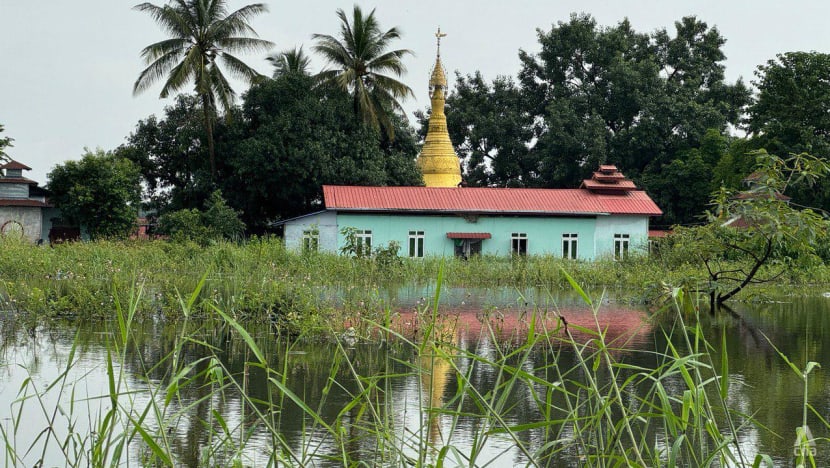Double whammy for Myanmar residents facing floods, as help from military dwindles
Despite the Myanmar junta’s efforts to show its regime assisting and giving aid, CNA found the number of soldiers on the ground to be far and few.

Floods during the 2024 monsoon season in Bago city, Myanmar. (Photo: CNA/Min Kyi Thein)

This audio is generated by an AI tool.
BAGO, Myanmar: Street vendor Aung Kyaw Soe is among scores of Myanmar civilians grappling with the annual monsoon season this year.
He has not raised the prices of the snacks he sells so children can still easily buy them, as the country struggles with heavy flooding on top of an economic crisis in the wake of a 2021 military coup.
A small gesture like this might go a long way – especially when help from the military junta appears to have dwindled.
Aung Kyaw Soe lives in Myanmar’s fourth-largest city Bago, about 80km north of its largest city and former capital Yangon. About 20,000 people there have been displaced from their homes due to floods caused by torrential rain.
“This year, we are seeing the least amount of donations. Where I live, we have only received one lunch box since the start of the floods (in end-July),” he told CNA.
Most troops have been preoccupied with ongoing clashes in the Southeast Asian nation, where the military seized control and outed a democratically elected government more than three years ago.
Before the coup, soldiers were deployed in droves to help villagers during the monsoon season. But in recent years, they have been sent to battlefields rather than disaster zones.
Despite the military’s efforts to show its regime assisting and giving aid, CNA found the number of soldiers on the ground to be far and few.
CONCERNS OF WATER-BORNE DISEASES
Earlier this year, the Myanmar military showcased its efforts to prepare for the monsoon season, including stockpiling food aid and getting rescue teams to help those affected by the floods.
Reality on the ground, however, has been starkly different.
Those seeking shelter in makeshift centres are struggling as donations have fallen in recent years.
With a dire shortage of fresh water across the country, residents also have no choice but to rely on rainwater. Concerns of water-borne diseases – a common occurrence in camps for displaced civilians – have surfaced as well.
This comes as Yangon struggles with cholera, a bacterial disease spread through contaminated water and food that can cause severe diarrhoea and even death. Since June, an average of 80 people have been hospitalised daily for severe diarrhoea.
All this comes on top of day-to-day struggles: A weakening currency and rising prices of food, medicine and petrol.

MAKING THE BEST OF THE SITUATION
Some residents however have chosen to make the best of their situation despite these obstacles.
The flash floods have brought in new opportunities, which some residents are lapping up.
Ko Mya Ko, who also lives in Bago, was a carpenter but has since turned to fishing.
“Since the flood, I could not work because all construction work was stopped. I learned that it is easy to fish now due to the floods, so I am doing that now,” he said.
Fishing for about six hours would be able to earn him about 8,000 to 9,000 kyat (US$1.80) if he manages to sell his catch.
For many like him, the yearly floods have become a norm.
Once the flood waters subside, they will return to their daily lives – but the question of when the tide will turn for Myanmar remains.














